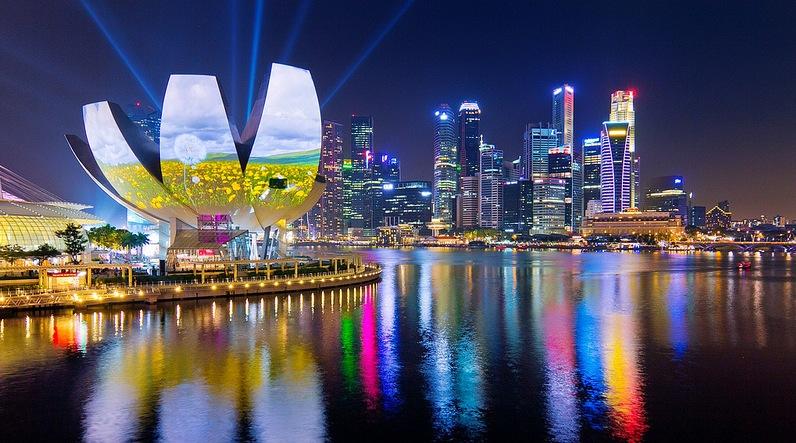CIFF Office Guangzhou 2015 – A Review
WRITTEN BY JOHN SACKS (JSA CONSULTANCY SERVICES)
As this report from JSA Consultancy notes the Chinese home grown products have some way to go to challenge the west of International design and shadowing international design seems as normal to be the norm. The sheer scale of the Exhibition is mind boggling and just where does all this product go? There were very few exhibitors from outside China and the concern about showing your products live in China may well still prevail. An interesting market non the less.
CIFF Guangzhou
Guangzhou, about two hours by train from Hong Kong, is China’s third city. It is a massive, sprawling metropolis and apart from the busy and impressive Pearl River which chops it into districts and a few landmark, iconic skyscrapers, it has few redeeming features. Unlike previous years’ shows, the heavy rains stayed away and the weather was hot and humid. It would probably also have been sunny, were it not for the almost permanent blanket of cloying smog which shrouded the city.
The 35th China International Furniture Fair is too large to be held at one time in the 430,000 sq m China Import & Export Fair complex, so it’s split into two, five day phases, held six days apart. Billed as the ‘Fabulous Furniture Fair’, Phase 1 concentrated on residential furniture. Phase 2 was for CIFF Office and for Interzum – the furniture materials and machinery show.
CIFF Office
CIFF Office was just as overwhelmingly crowded, frantic and idiosyncratic as ever. There were enough office furniture related products to satiate the most enthusiastic devotee. How can there be so many office furniture companies? More than nine hundred exhibitors, of which very few were from outside China. None from outside Asia. And how can so many visitors – again almost all from China – be quite so interested in office furniture? They certainly seemed to be. There were of course some visitors from overseas; this year, most of the non-Chinese seemed to be from India.
The show spans 34 halls, some of them vast, on a site which covers more than 100 acres. The distances required to traverse the site are so great that there are permanently long lines for the shuttle service of dozens of electric buggies transporting visitors from one area to another.
The halls are organised by product sector, very much in the way shops in China are grouped, with all the food, jewellery, camera, bridal and shoe shops in separate clusters. Here at the show, all the office seating for example is gathered in nine vast halls, all on its own, as if customers for seating are expected to be uninterested in any other office furniture. If you never saw another mesh chair, it wouldn’t be too soon.
There were some attractive, well designed products – but you needed to kiss a lot of frogs before you found them. Many of the larger stands were well designed and attractive and used colour and graphic themes creatively. Furniture was often well spaced to allow it to catch the attention and to cater for the massive crowds on some popular stands, especially at the beginning of the week.
The halls and general areas were patrolled by many different groups of officials and assistants. Security guards, SWAT crews, information providers, cleaners – and semi-military types holding up signs telling visitors what they could and couldn’t do.
All the usual facilities were present, even if language barriers sometimes made them difficult to find. Restaurant and refreshment facilities challenged non-Asian palates and most of the Westerners I saw gravitated to MacDonald’s rather than brave, the mainly unidentifiable, Chinese dishes.
Walking the halls hardened the heart. Every stand, and most of the aisles, were packed with crowds of incredibly keen, identically dressed young salespeople who indefatigably launched themselves at anyone within shouting distance in order to obtain their “name card” or to try to elicit even more useful information. Westerners were especially juicy targets. Glancing at a stand was enough encouragement to cause several salespeople to pounce. At every step, you were reminded of just how commercially-minded and competitive China is.
No one seems to have any idea of the size of the office furniture market in China nor of the relative scale of the largest manufacturers. Several claimed to be the largest but didn’t know who their closest competitors were. One told me they had 5000 employees and 20 factories!
Trends
The creativity and innovation which seemed to be blossoming at last year’s show was sadly less in evidence this year. Maybe all the talk of lower levels of growth had put a brake on some of the investment in design and development. As in previous years, some Chinese manufacturers had employed western designers, especially from Italy and the Netherlands, and the results attracted even bigger crowds to those stands. Western products were on display on some stands, both officially, where companies such as Sunon were showing genuine Humanscale chairs, and more often unofficially, with the usual raft of blatant copies of products from companies such as Vitra, Okamura and Interstuhl.
There was less breakout furniture on show than in previous years but there were plenty of examples of other western trends, such as wood-effect legs and felt upholstery on seating and screens. Other western-styled products harked back to earlier days with L-shaped work stations, spines and large executive desks. Often, the only distinguishing features were the different styling of legs, end-frames and finishes.
Almost all Chinese manufacturers are still at the stage where the inspiration for new product design relies more on emulating international styles and features, rather than creating products based on the study and understanding of the nature of office work and how it is changing.
To read full report please follow the link: CIFF Office Guangzhou 2015
John Sacks
JSA Consultancy Services





